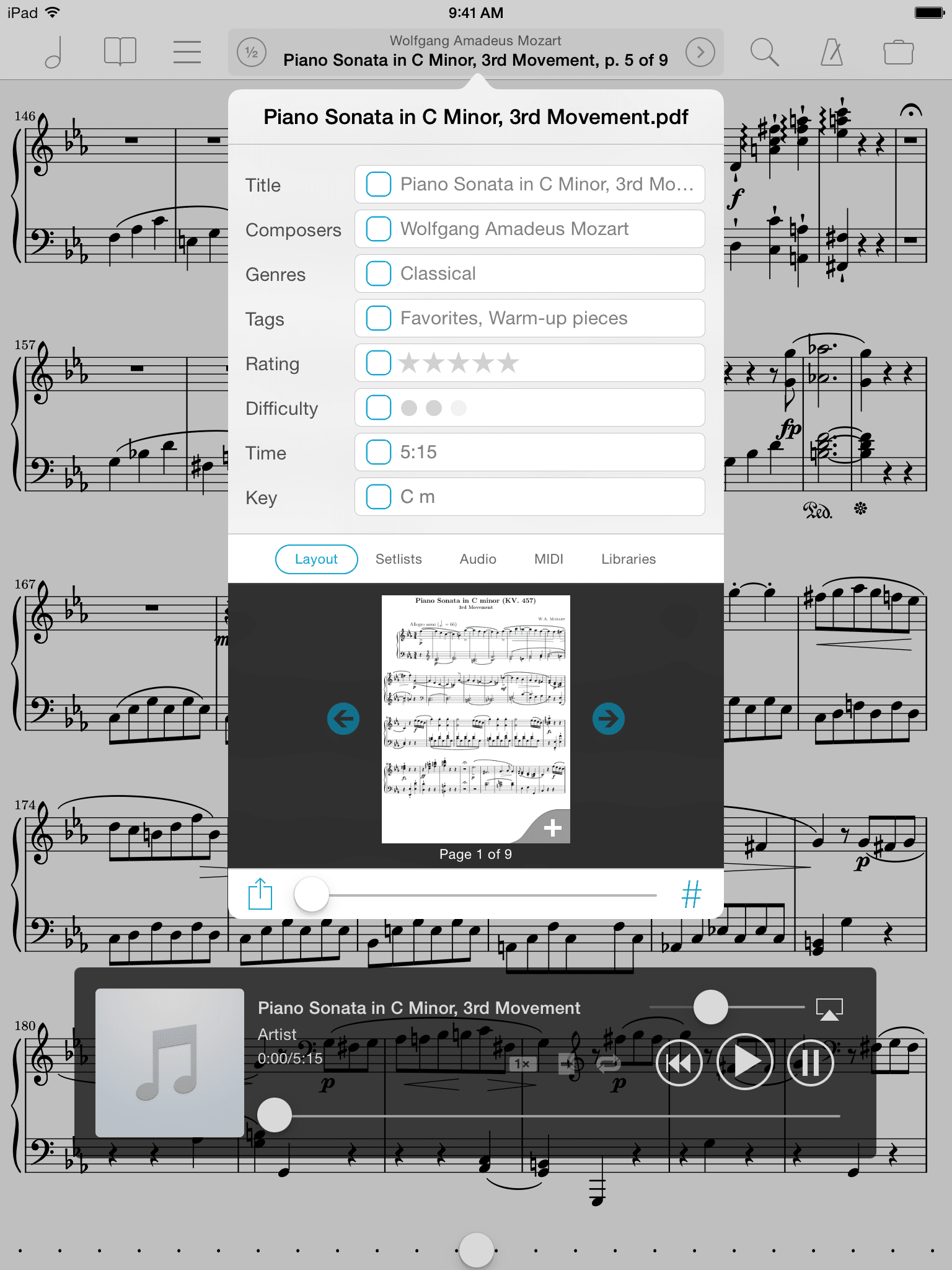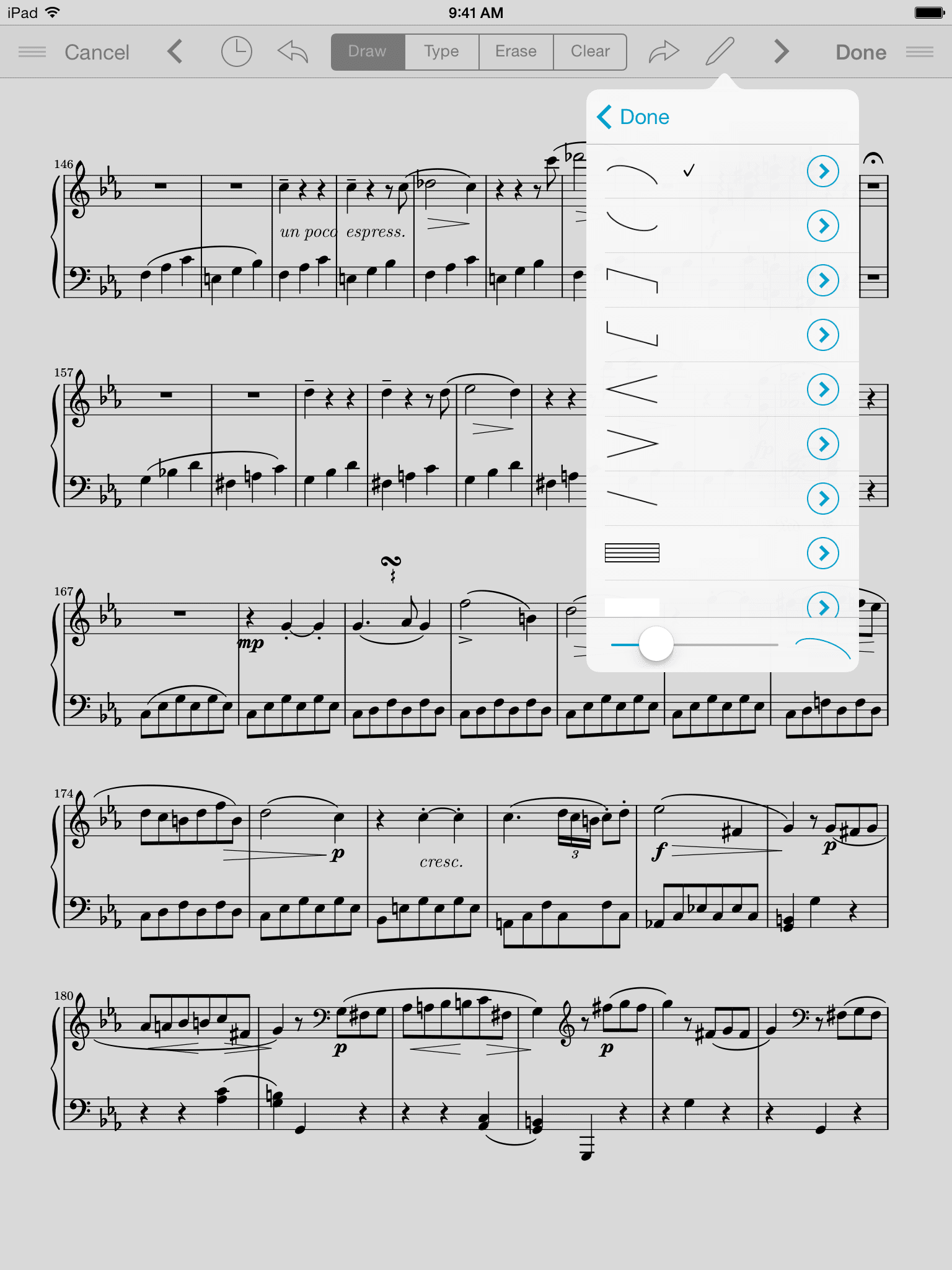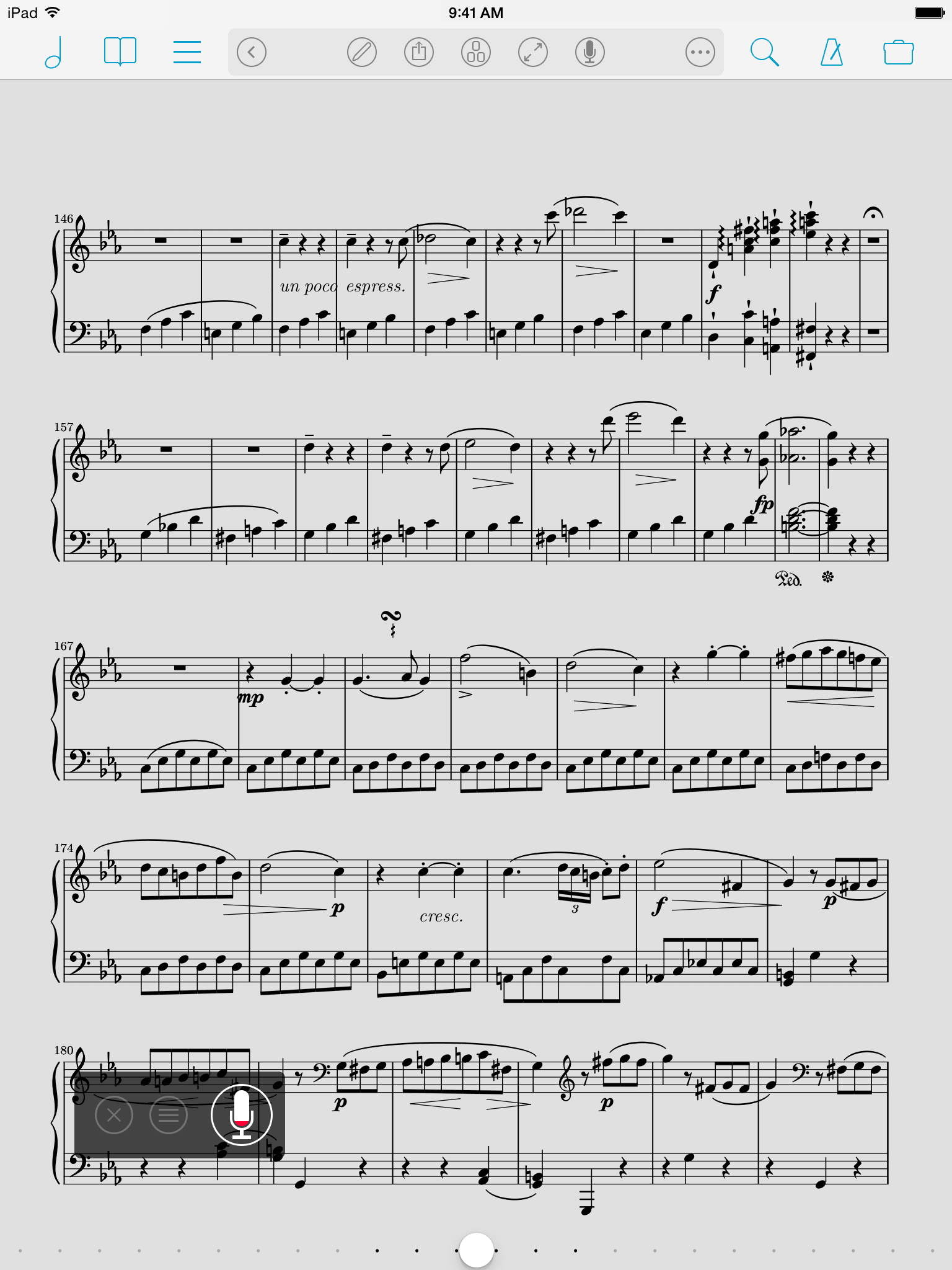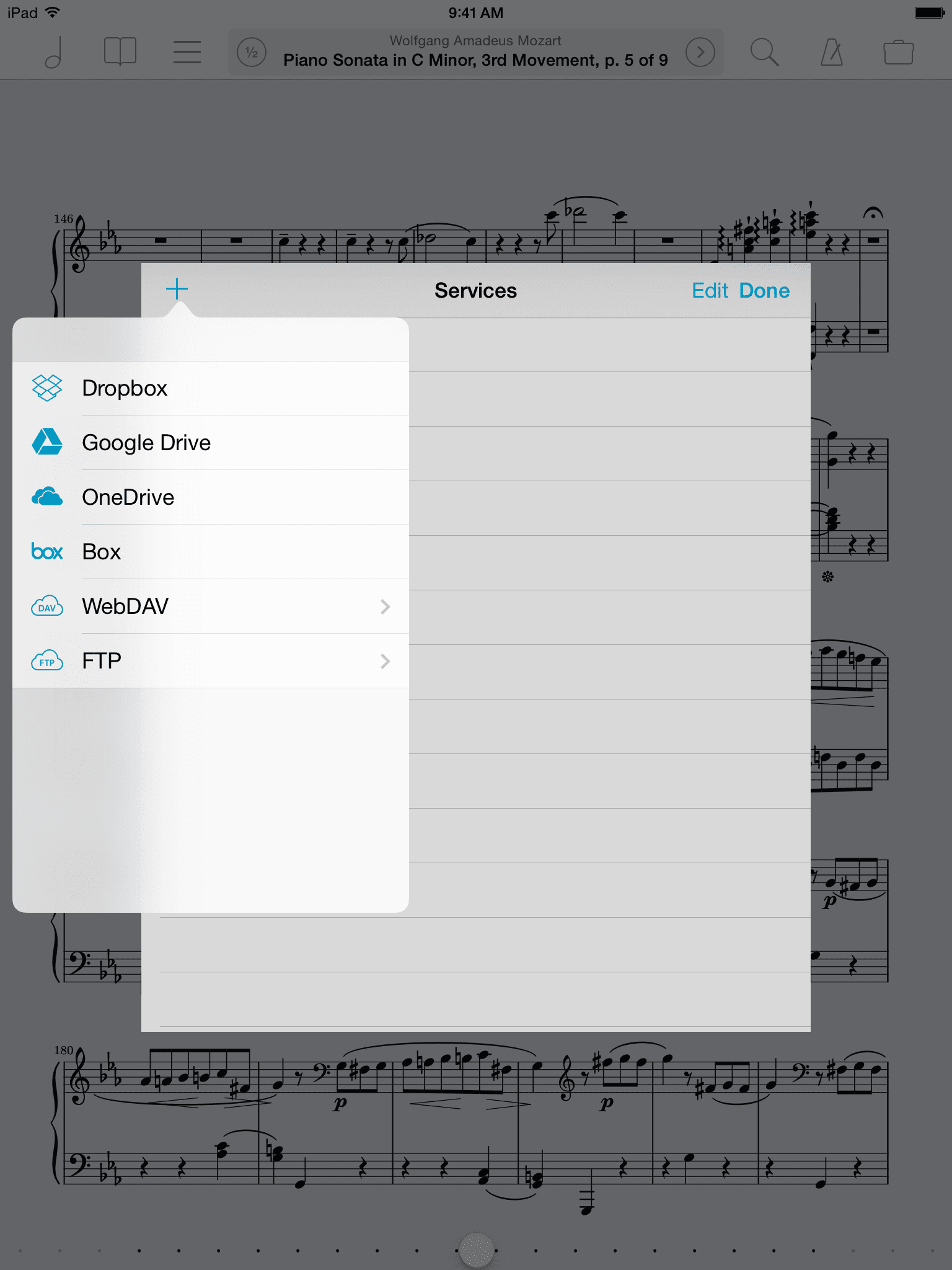Seven
April 2014
After four years of very active development and one extreme makeover, it was clear that forScore had matured. That's not to say, of course, that it was done. Though we might never again effect such dramatic changes as we did with the addition of annotation, bookmarks, or setlists, iOS updates keep rolling out and iPads keep getting more powerful.
Since it was introduced in 1.5, our Stamps feature has been an invaluable part of forScore's annotation toolset. Despite our advances over the years, stamps still failed in one key area: they couldn't create dynamic shapes. With 7.0, we solved that problem with a new Shapes tool that allowed users to easily create slurs, crescendos, and more.
Support for audio files (not just those in your iPad's music library) made it easier to add non-iTunes music without returning to your computer. We also added a new recording feature so musicians could review their practice sessions or share them with friends and colleagues. With that new feature in place, we knew we needed to provide quicker access to certain tools and functions, so we added a second page to the title bar's center display and filled it with rearrangeable shortcuts.
With version 7.1, we took on a huge new project: expanding our support for cloud storage services. Since version 1.2, Dropbox integration had been a key feature for our users, and although requests for integration with other services had trickled in over the years, they continued to grow until we knew we had to take it on. It was an incredibly complex task, but by creating a unified infrastructure and isolating the service-specific parts of our code, we were able to add support for Google Drive, Microsoft OneDrive, Box, and even standard WebDAV and FTP servers.




